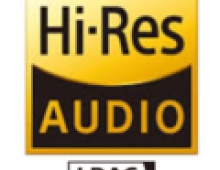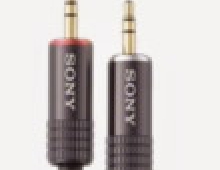
JEITA Defines High-Resolution Audio Characteristics
The Japan Electronics and Information Technology Industries Association (JEITA) has recently provided details on the High-Resolution Audio format, which is offering quality surpassing that of CD (16bit/44.1kHz).
High-Resolution Audio is made by digitally sampling an original analog audio source. The rate at which a sampling is performed per 1 second is called the sampling frequency, expressed in Hz. Digitizing refers to the process of quantizing the sampled signal into binary digits consisting of 1's and 0's, and is expressed as "bits". Here, a higher number of bits means a result that is closer to the original source.
Audio CDs are standardized at 16bit/44.1kHz. There is no such single standard for High-Resolution Audio, so JEITA has decided to define the 44.1kHz/24bit, 48kHz/24bit and 96kHz/24bit sampling as "high resolution audio," as you see below:
- 48kHz/24bit: Hi-Res Audio
- 96kHz/16bit: Hi-Res Audio
- 96kHz/24bit: Hi-Res Audio
- 48kHz/16bit: No Hi-Res Audio
- 96kHz/12bit: No Hi-Res Audio
- 32kHz/24bit: No Hi-Res Audio
An alternative means for digitizing an analog source is a method called DSD (Direct Stream Digital) which quantizes in 1 bit increments at an extremely fast 2.8MHz or higher, and is expressed as DSD 1bit/2.8MHz, etc. JEITA's definitions did not include DSD.
Audio CDs are standardized at 16bit/44.1kHz. There is no such single standard for High-Resolution Audio, so JEITA has decided to define the 44.1kHz/24bit, 48kHz/24bit and 96kHz/24bit sampling as "high resolution audio," as you see below:
- 48kHz/24bit: Hi-Res Audio
- 96kHz/16bit: Hi-Res Audio
- 96kHz/24bit: Hi-Res Audio
- 48kHz/16bit: No Hi-Res Audio
- 96kHz/12bit: No Hi-Res Audio
- 32kHz/24bit: No Hi-Res Audio
An alternative means for digitizing an analog source is a method called DSD (Direct Stream Digital) which quantizes in 1 bit increments at an extremely fast 2.8MHz or higher, and is expressed as DSD 1bit/2.8MHz, etc. JEITA's definitions did not include DSD.




















